The firstborn of French tank building. Prototypes of the Schneider and Saint-Chamond tanks
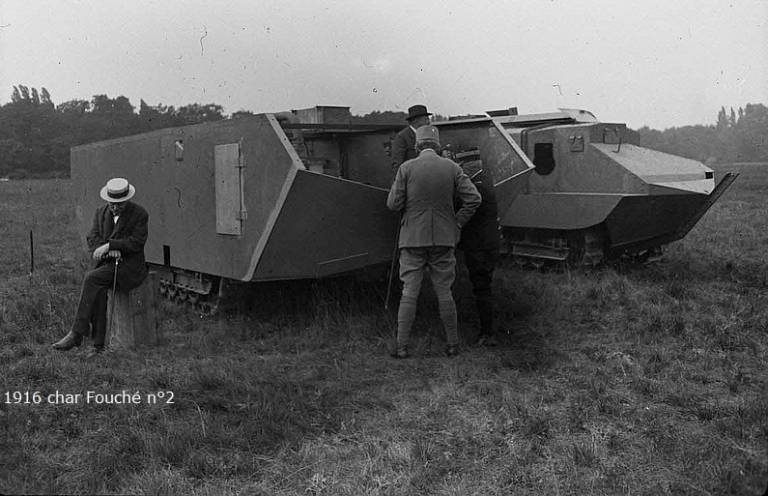
The first French tank arose as a result of a meeting in December 1915 between Colonel Etienne and engineer Brillier from Schneider-Creusot. Since the autumn of 1914, Jean Etienne himself had been hatching the idea of a combat tracked armored vehicle with weapons. He outlined his idea about the design and methods of using such a machine in a memorandum to the War Ministry dated 01.12.1914/XNUMX/XNUMX.
The above meeting with E. Brillé served as an impetus for the development of a specific project in December of the same 1915. Already in early January 1916, the Commander-in-Chief of the French Army, General Joffre, authorized the continuation of the project, and on January 31 he submitted an application to the War Ministry for the purchase of 400 so-called "land battleships" armed with a 75-mm cannon.
Before the combat vehicle goes to the test, its prototype is created in order to test the viability of this idea, determine the future appearance of the vehicle, check design solutions, etc. It was the same with the first French tanks.
On the orders of General Leon Mourret and on behalf of the Automotive Technical Service, in the first half of 1916, Lieutenant Charles Fouchet, an officer of this service, built and tested three prototypes of future French tanks in Vincennes.
The first prototype tests began in February 1916.
Machine No. 1 Type A
This machine was an American Caterpilar Baby Holt tractor with a capacity of 45 hp. from. Strong spars were attached to the front and rear of the tractor. A vertical wedge-shaped shield was installed on the front, and a transverse platform was laid on the rear. These additional designs were supposed to imitate to some extent the length of the armored hull.
The back deck idea came from Schneider and proved to be very handy, especially when transitioning. It could carry cargo or 1-2 passengers. Somewhat later, the company patented this platform (Schneider patent dated February 17, 1916).
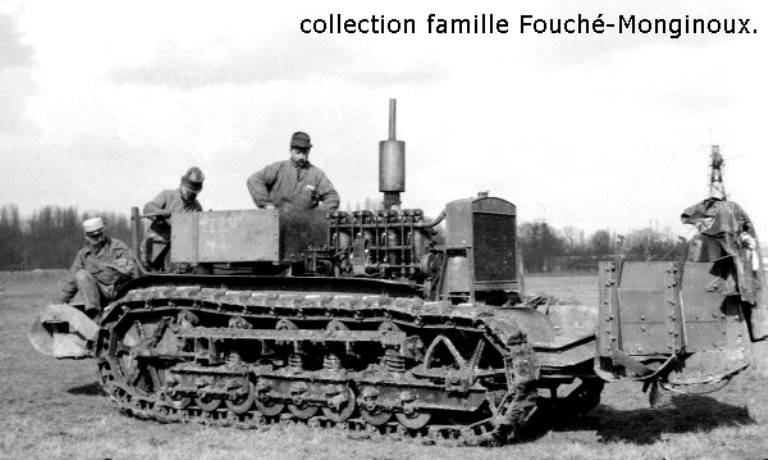
Machine No. 1 Type B
During the tests on February 21, 1916 in Vincennes, the machine No. 1 Type A (Tractor A), during a rapid transition through the trench, went down too steeply, rested against the wall of the trench and stalled, because the fuel could not reach the carburetor under the action of gravity.
Therefore, it was decided to correct this shortcoming: to replace the American Kingston carburetor with the French Solex carburetor, which only partially solved the problem. This is how the Type B machine was born.
This incident did not change the judgment of General Murre and Deputy Secretary of State Thomas about the future of the new tracked vehicle. And so it was ordered to build a future tank with a caterpillar extended to 3960 mm. Recall that the length between the axis of the sprocket and the tension roller of the Baby Holt 45 CV tractor, which served as the basis for the work of Second Lieutenant Charles Fouche, was 2 meters.
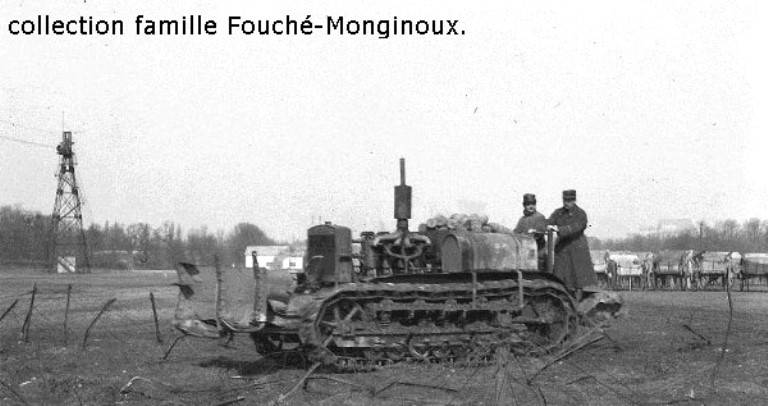
Machine No. 1 Type C
This machine was only the final development of Type A and Type B (i.e. one machine was built in three versions).
The Type C vehicle was fitted with a wooden armor model to mimic the future armor of the final tank. Indeed, due to lack of time, Fouche's brigade was unable to build the originally planned model of the steel armored hull. At the direction of Squadron Leader Ferrus, the front hull model took the shape of the bow of the ship. This shape of the nose was supposed to make it easier to lay a path through a wire fence and provide a diversion to the side of the cut wire in order to prevent the tracks from jamming and immobilizing the machine.
In his memorandum to the War Office dated March 8, 1916, Ferrus wrote on this subject:
Prototype No. 1 Type C, in fact, was a 1 meter long Holt chassis with an additional bogie and placed in a makeshift boat. The design of the front end was intended, as stated above, to break through barbed wire and possibly "surf" through the mud. At the same time, Type C did not have weapons, and the hull was open-topped.
Tests were organized with the participation of de Bousquet and Captain Ferrus. Others were present, including Louis Renault. Most of this experience was later transferred to the Schneider company, which began mass production of the Schneider SA-1 tank.
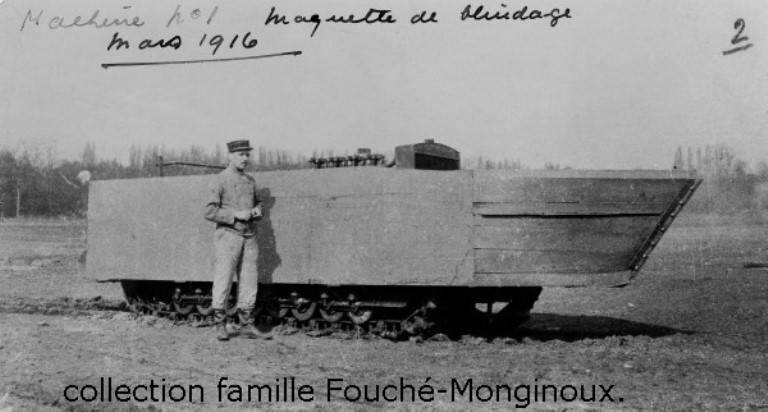
In the photo above we see the undercarriage designed by Charles Fouchet by adding a third bogie with three road wheels to the Caterpilar Holt chassis, which corresponded to the extension of the track to the ground by one meter.
Unfortunately, the boat-shaped hull shape, which proves to be a very reasonable solution for crossing the strongest barbed wire with wooden or steel stakes, will be an absolutely disastrous solution for moving around the battlefield. The nose of the machine has a tendency to get stuck at the first approach to an obstacle, as evidenced by the incipient accident in the photographs below, taken in Vincennes with de Bousquet at the helm and Lieutenant Fouchet in the trench.
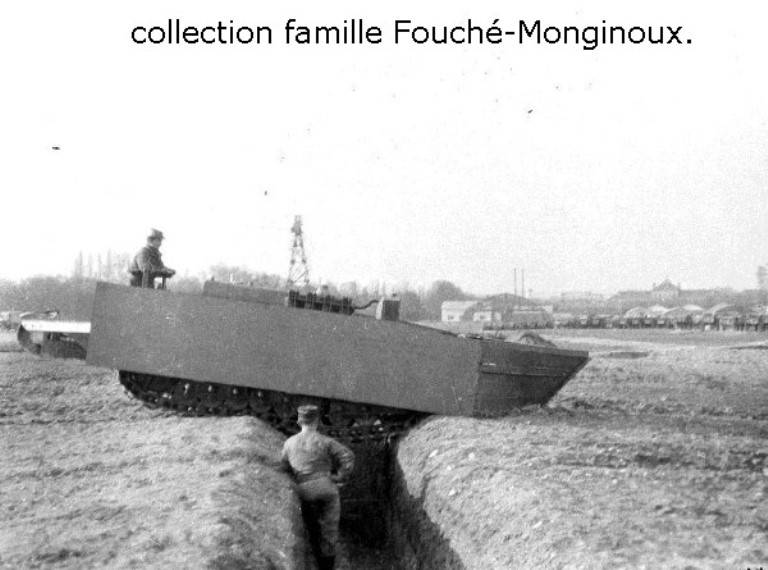
In the spring of 1916, Monsieur Louis Renault (in a black bowler hat in the photo below), who was present at the prototype tests, did not refuse to personally test the machine No. 1 Type C.
Marshal de Bousquet and Captain Ferrus came on board with him to help him navigate this complex machine. Since there was not enough space on the aft platform, Second Lieutenant Fouche, frustrated by the inability to participate in the demonstration, is on the left in the photo, and his team is on the right.
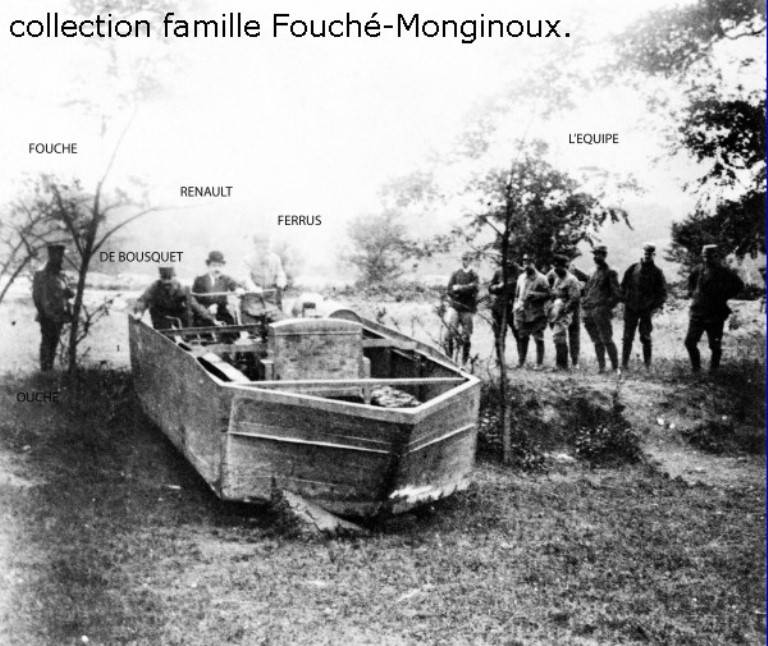
In the following photo, machine No. 1 Type C is photographed in Vincennes during tests carried out on live barbed wire networks, which were carried out at the request of the deputy Jules Louis Breton. On the left is General Murret, in the center is Captain Leiss of the Automotive Technical Service, and on the right is Second Lieutenant Fouche. At the helm of the tank de Bousquet. Photo taken May 3, 1916.
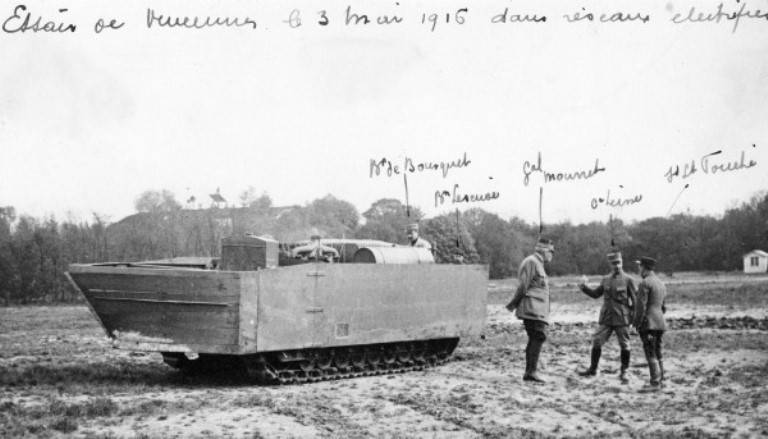
Machine number 2 or tank Saint-Chamond
The new vehicle No. 2 was also built from two American Baby-Holt 45 CV tractors supplied by Schneider's subsidiary, Somua in St. construction of the Schneider CA tank).
This car has the same dimensions as car No. 1 type C, but with an installed electromechanical transmission, developed by engineers Krosh and Collardo and consisting of a valveless Panhard dry sump engine driving a generator that supplies electric current to two Thomson tram motors - Houston for the movement of each caterpillar. This very modern device for that time made it possible to do without a gearbox, main clutch, differential and side brakes.
This machine was first tested on August 1, 1916 in the woods of Meudon, and then on August 3, 1916 in Vincennes in front of Mr. Albert Thomas (Under Secretary of State for Artillery and Ammunition).
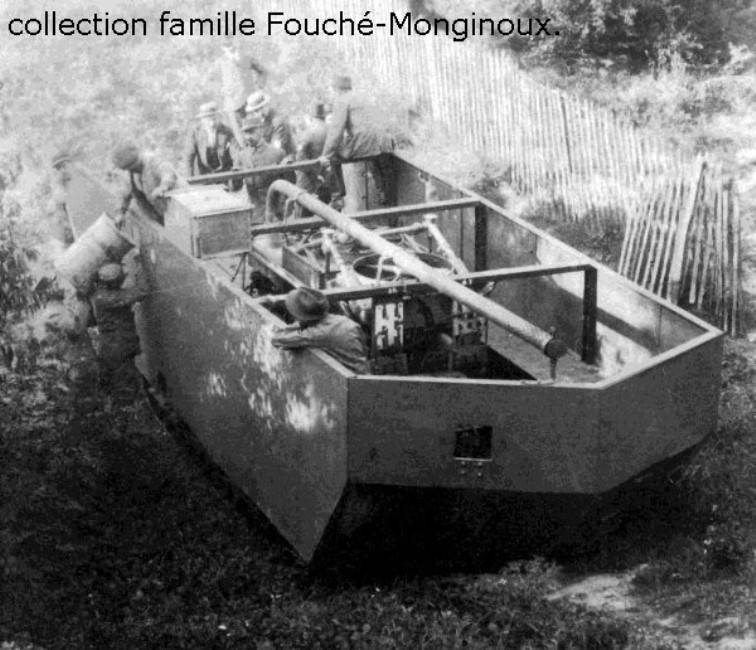
Since the future Schneider tank was a model built in an arsenal, and the later Renault FT model was a product of an automobile company, by 1916 the secretariat of artillery and personally the head of the army motorization department wanted their own project, which became the Saint-Chamond tank. .
The first prototype of the Saint-Chamond tank was also built by a team of engineers Crochet, Collardo, Dutil and Senior Warrant Officer Renu under the leadership of Second Lieutenant Fouchet.
"Saint-Chamond", developed in parallel with the "Schneider" CA, was also based on a modified Holt chassis. It has a much larger hull to meet the needs of the army for better armament, effectively becoming the most heavily armed tank of the war on the Allied side, with a 75 mm QF field gun and four machine guns. But its longer body proved to be its Achilles' heel. He was more prone to bogging down than "Schneider".
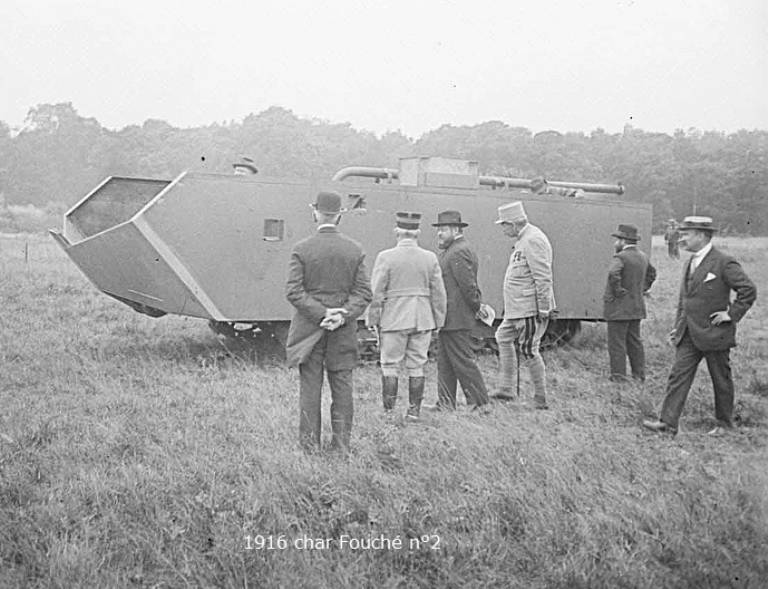
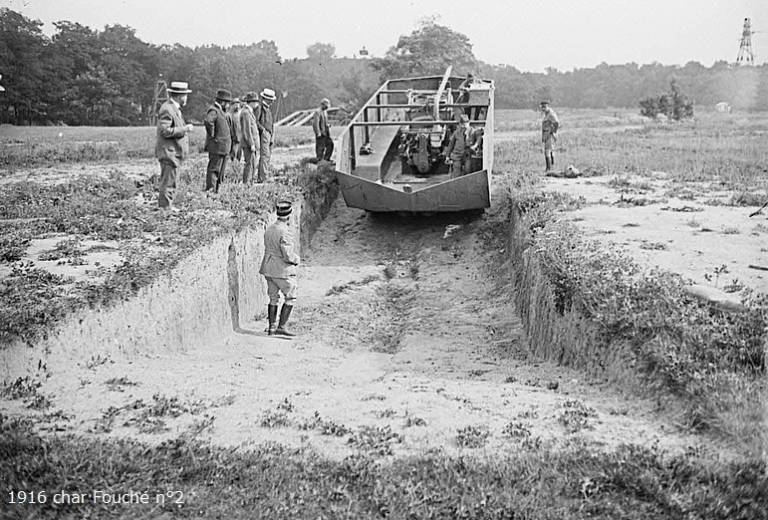
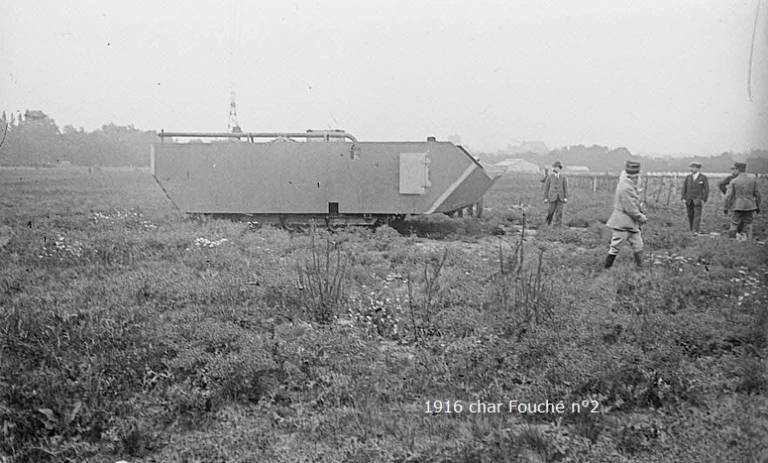
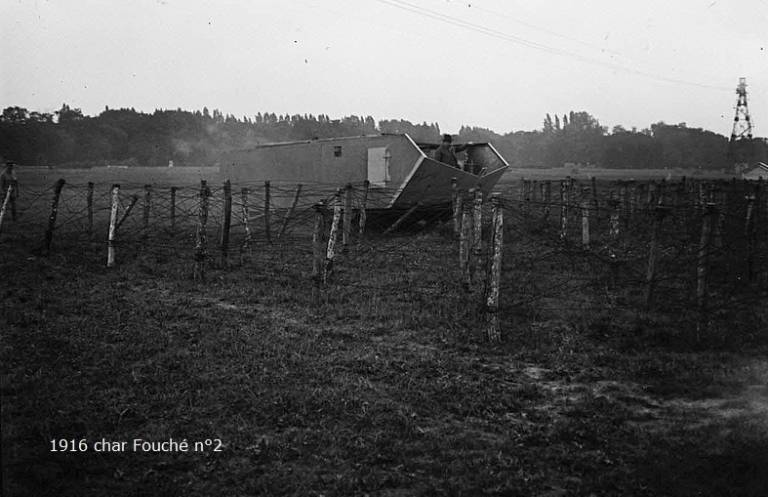
Thus, the first prototype of the Saint-Chamond tank was tested in Vincennes in August 1916. Later, a factory prototype was built by the FAMH consortium in Saint-Chamon, which was tested at the Fort du Trou-d'Enfer in Marly on September 7, 1916. After testing, an accident occurred with the tank. When the tank entered the platform, the latter derailed and the tank overturned.
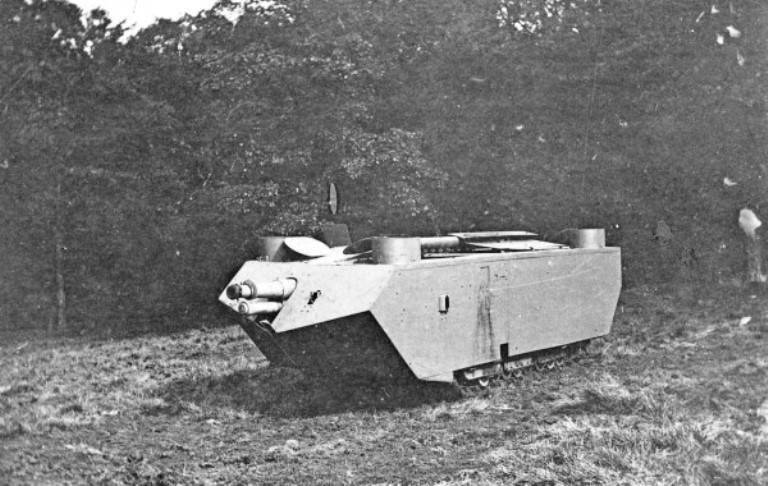
In the photo above, the prototype of the Saint-Chamond tank is moving along a dirt road during testing at the Fort du Trou-d'Enfer in Marly in September 1916. The prototype is fitted with mild steel armor that covers the entire tank. This type of armor with a flat roof will become final and will be present on most tanks.
The combat vehicle is equipped with a cannon, which was identified thanks to Colonel Malmassari - this is a 120 mm Baquet short gun, which will not be saved in the end.
This was the version of the tank that Lieutenant Charles Fouchet and his team developed without help and without instructions from above.
Fouche No. 3
Machine No. 3 or, as it was later called, the "strange machine" was also developed in 1916 in parallel with the prototypes of the main tanks.
We have little technical information on this car, which appears to have been built on the chassis of car #1, fitted with Benjamin Holt's universal transmission.
This version was sheathed with a new wooden screening model of a rather complex shape: a side screen and a roof with inclined planes. In the bow, Lieutenant Fouche's team installed what looked like a bulldozer blade. Therefore, we can try to call this vehicle the first engineering tank created in France. His task could be to fill holes and craters with earth or make passages in obstacles on the battlefield to help the battle tanks in their advance.
Unfortunately, not a single document related to the testing of tank prototypes, as well as the name of Lieutenant Charles Fouche, mentions the testing of this vehicle. We only have her photo.
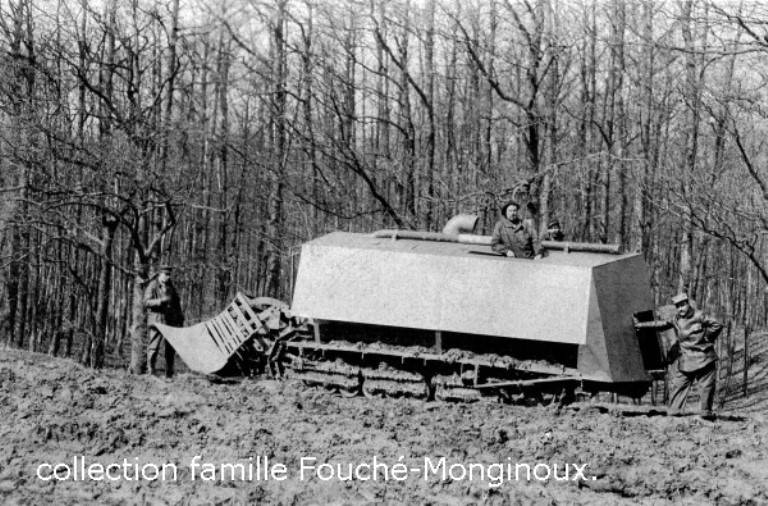
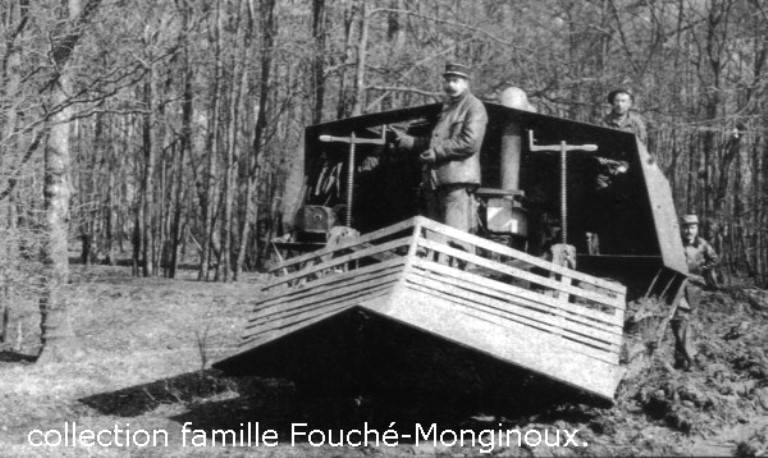
Tank "Fouche - Schneider" 1916
In July 1916, Minister of Armaments Albert Thomas wished to see the first two French tanks, namely Saint-Chamon and Schneider, in action at the Vincennes training ground. But neither Saint-Chamond nor Schneider were able to produce a prototype due to lack of time. Therefore, it was decided to build a prototype of the Saint-Chamond tank by the Automotive Technical Service (hence, the team of Second Lieutenant Fouche), using the chassis of the already built machine No. 1 C and install a model of the mild steel armored hull already supplied by Schneider under the contract. The minister was presented with fake "Saint-Chamond" and "Schneider". Moreover, the fake Schneider was equipped with the undercarriage of the future Saint-Chamon tank with three road wheels.
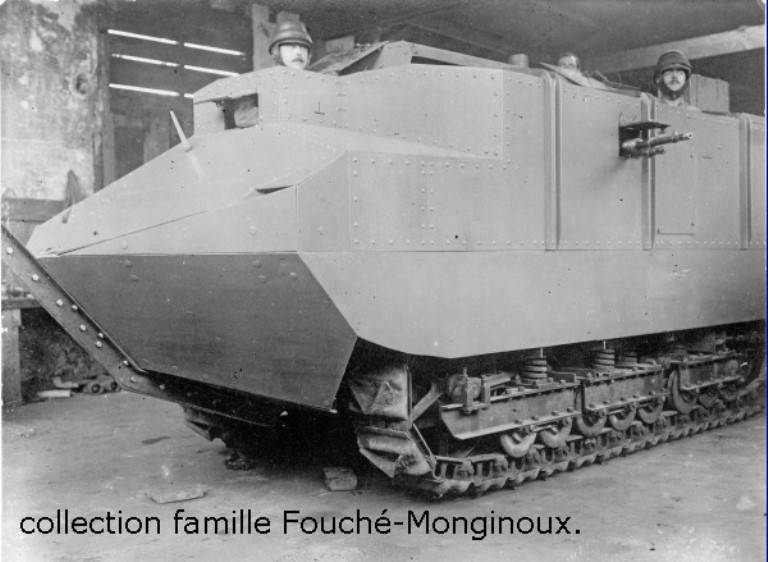
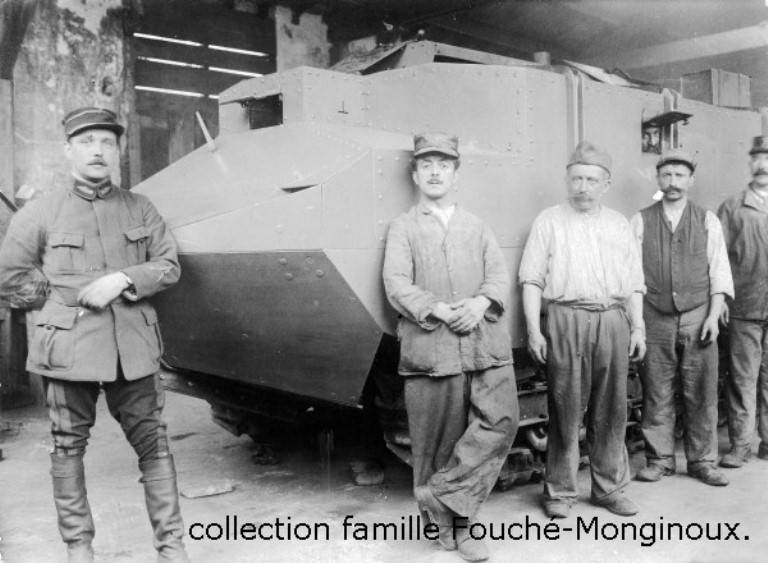
During the presentation, the Schneider was equipped with scissors designed to cut barbed wire nets mounted on the bow beam. During the tests, it turned out that the delicate cutting device, when moving over rough terrain, often became clogged with earth or grass and became unusable. Apart from a few pictures, no other information was preserved, and the system was never put into service.
On serial machines, a simple nose beam was installed to break through the wire.
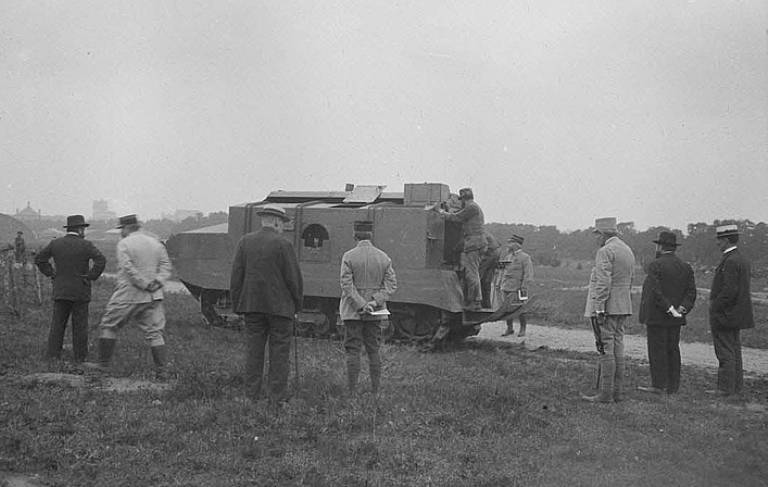
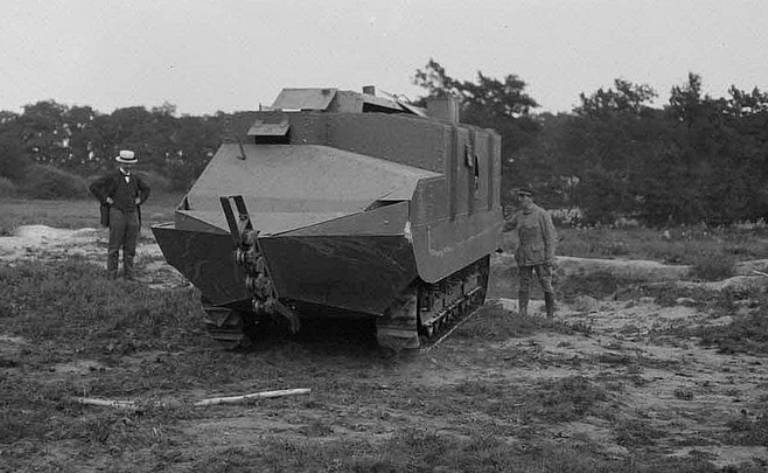
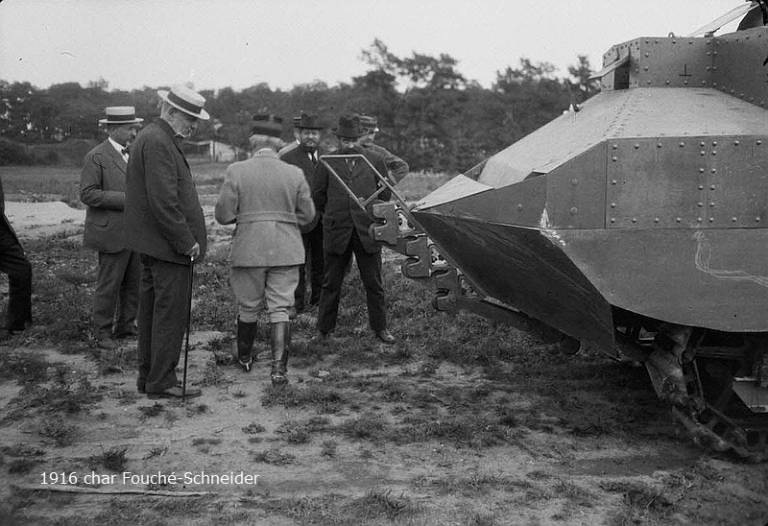
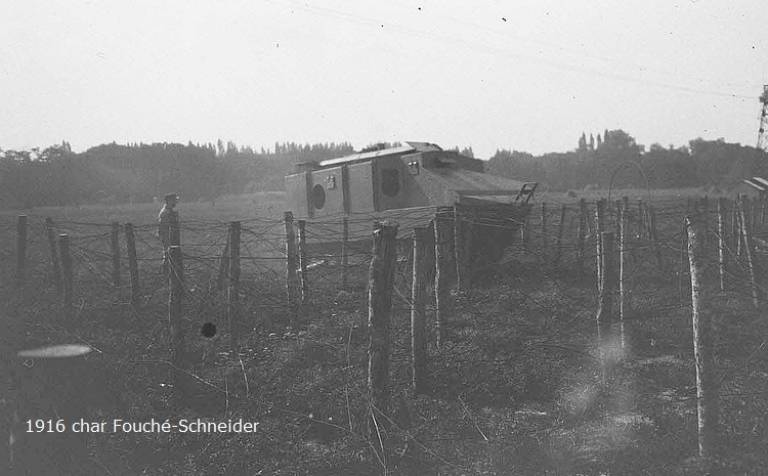
Serial tank "Schneider SA-1"
After carrying out all the tests and minor improvements, it was decided to start serial production of the tank under the CA-1 index (char d'assaut-1 - assault tank, model one).
And already on September 8, 1916, the first production model came out of the Schneider factory workshop.
The serial tank was an armored hull mounted on a Baby-Holt chassis, consisting of two steel spars connected by crossbars carrying the engine in front and the transmission in the back. This chassis was supported by means of springs on two bogies with three and four rollers, respectively, the caterpillar consisted of 34 tracks supported by rollers. A four-cylinder engine built for this purpose by Schneider developed 60 hp. from.
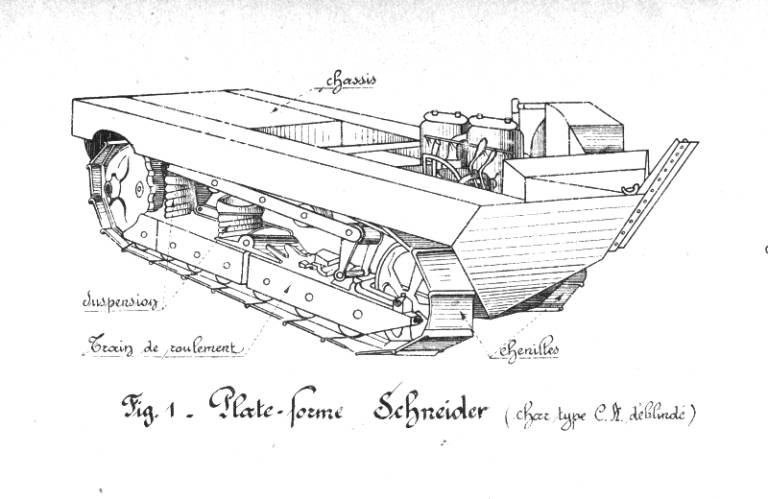
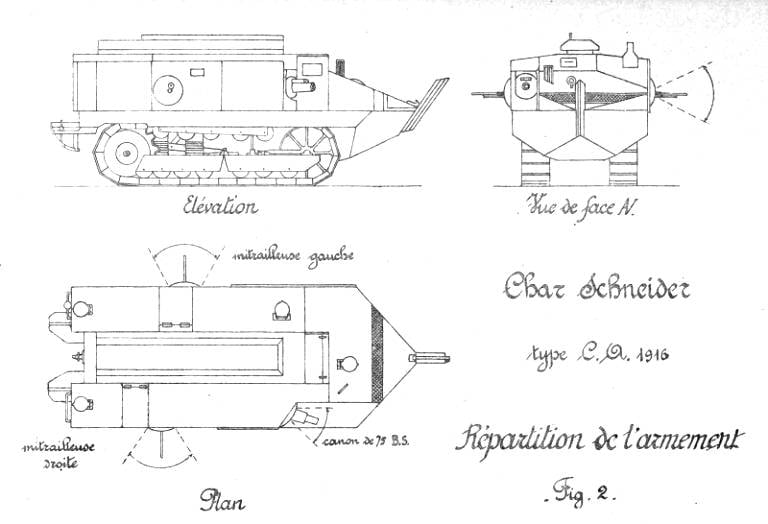
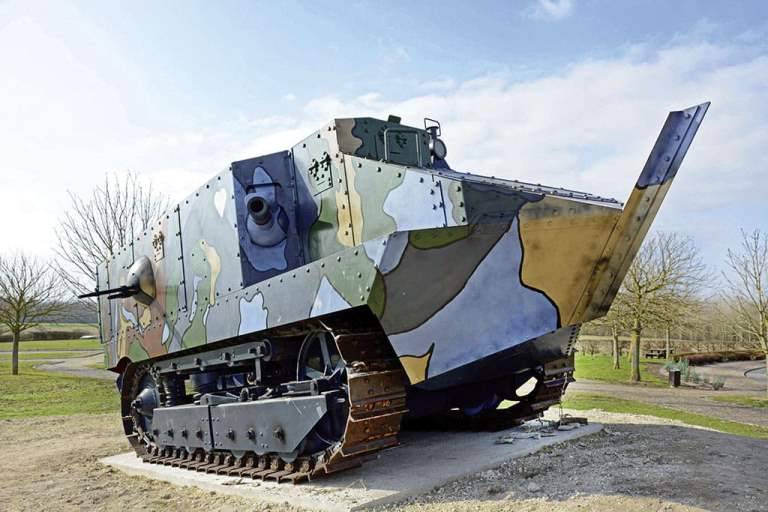
The armor of the vehicle covered the engine, crew and armament from shrapnel and small arms fire. weapons and was made of sheets of hardened steel 11 mm thick, impenetrable from a Mauser rifle at a distance of 150 m.
The tank was accessed through a rear door, and a sunroof provided ventilation. A metal strip was located in front, which served not only to break through wire obstacles, but also to support the tank when it leaned forward, preventing it from sinking into the ground with its bow. For the same reason, the tank was equipped with two rear tails.
The armament included a 75-mm Schneider BS cannon from Blockhaus, which fired a high-explosive projectile at an initial speed of 200 m/s. Her shot was accurate up to 200 m. The vertical sector for shooting ranged from -10 ° to + 30 °, and the horizontal in the direction of -60 °. A machine gun was placed on each side. Their installation on the kingpin in hemispherical domes made it possible to carry out lateral and vertical guidance with movement in the direction of 53 ° in each direction and in elevation from -45 ° to + 20 °.
It should be noted that even before the use of the tank in the case, it became clear that the "Schneider" is vulnerable to German armor-piercing bullets 7,92x57 type "K". Therefore, already from the end of April 1917, French engineers began to install the so-called "top armor", consisting of an overlay of a 5,5 mm thick sheet located about 40 mm from the usual hull armor (photo below). The additional armor, although limited to the most exposed parts, added about one ton to the weight of the vehicle. This was the first of the modifications aimed at correcting serious shortcomings that arose during the first battle on April 16, 1917.
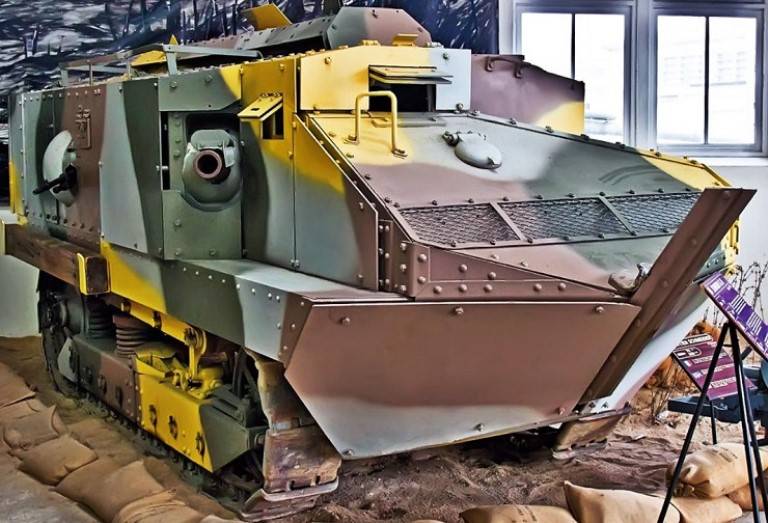
In the same 1917, two Schneiders were converted into radio tanks, and several more into supply tanks. The latter were fitted with wider rear doors.
Tanks "Schneider" were first used on April 16, 1917 in Berry-au-Bac (Chmin-de-Dame). According to various estimates, from 128 to 132 tanks participated in the battle.
Initially, the tanks were intended for breakthrough operations, but starting from 1918, they began to be used to escort infantry along with Renault FT-17 light tanks. The vehicles remained in service until the armistice.
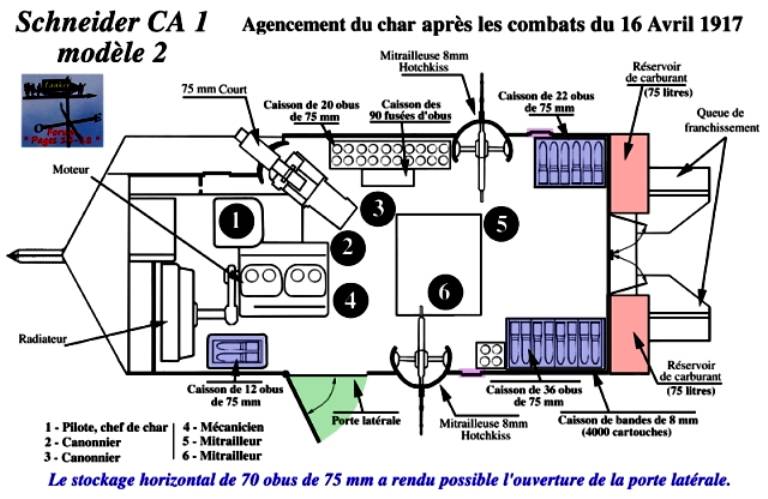
Projects of highly improved versions - SA-2 with a mobile turret armed with a 47-mm cannon mounted in front of the roof, and SA-3 with an elongated hull and a two-man turret - did not receive further development.
"Schneider SA-2"
From March 1917, General Etienne considered the possibility of improving the Schneider tank. Modifications were to be made to expand the tracks and move them forward, install a turret armed with a 47 or 37 mm cannon. The weight of the tank was not to exceed 13 tons.
Planned to release 400 copies.
Preliminary design drawn by Lieutenant Saar in December 1916.
The tank was tested at Champliers in late March 1917, but it is not known whether it was a prototype or a modified CA-1.
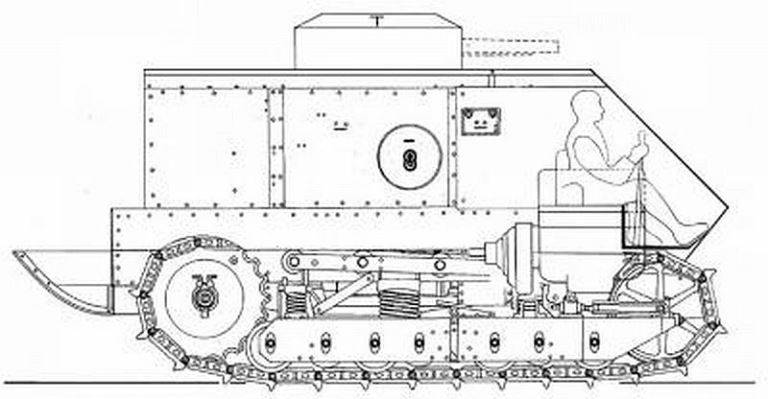
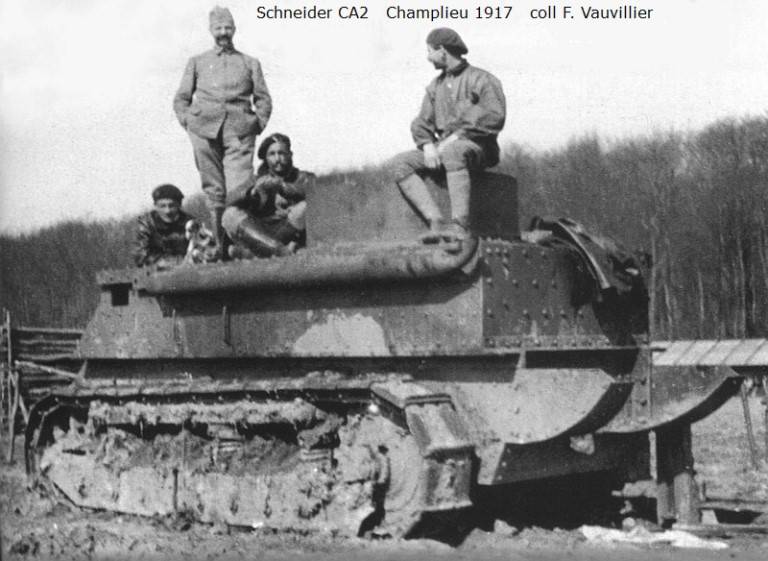
"Schneider SA-3"
Modification "Schneider SA-3" was developed on the basis of SA-1. The tank was developed in several versions, but all of them were rejected by General Etienne.
So, the first option offered a short 75-mm cannon under the casemate. The length of the machine is 5,95 m. The second variant under the index 1050, in addition to the main gun in the turret, had a short 75-mm gun in the front plate under the turret.
Paradoxically, the turret model was decisively rejected due to the fact that at the beginning of 1917 there was practically no threat from an enemy tank. Potential targets for a tank gun could only be field fortifications, forts, machine-gun nests or artillery pieces, so the installation of a gun in casemates was, in the opinion of the military, quite appropriate.
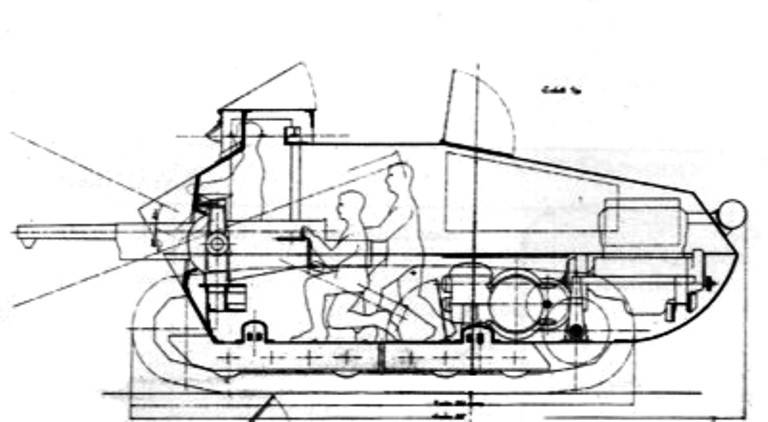
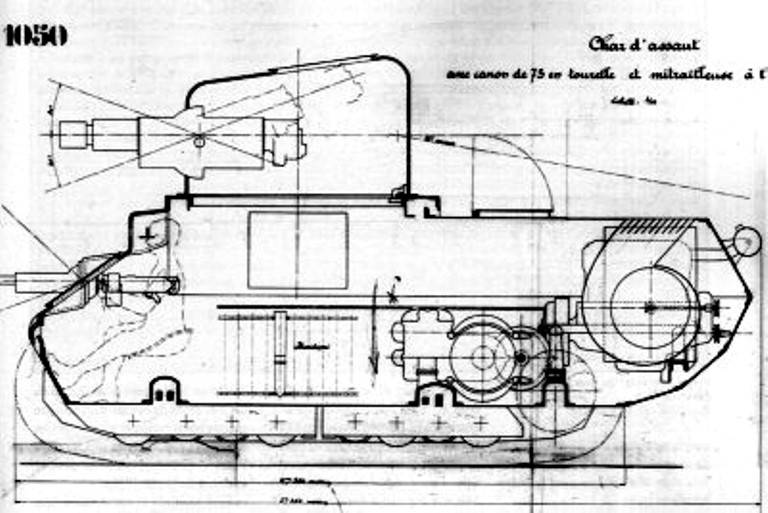
Tank "Saint-Chamon" 1916
This new machine, the production of which under the index H.16 began already in September-October 1916, had undeniable advantages over the Schneider: it was longer (with an initial increase in mass by only a third), had much higher protective qualities, but turned out to be ineffective in everything, especially off-road due to the significant extension of the bow forward.
Its armament was more powerful: a 75 mm field gun located in front and firing along the axis, four machine guns and only two additional crew members. The dimensions of the H.16 offered a more spacious fighting compartment than the Schneider, with better visibility.
Four hundred copies of this model were ordered.
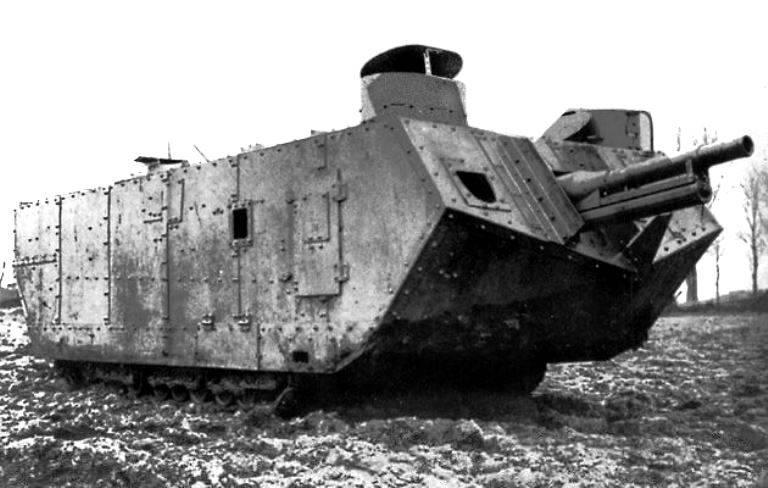
Tanks "Saint-Chamon" are registered in the range of numbers from 62 to 400.
From February 1917 to February 1918, 12 Saint-Chamond tank groups were created in the Champlio camp, with numbers from AS31 to AS42. Each group initially consisted of four batteries of four tanks, and from December 1917 - of three batteries. For the first time, "Saint-Chamon" entered the battle on May 5 and 6, 1917 during an attack on the Laffaux plateau, in which twelve tanks participated.
During the first battle, it was noticed that the tracks were too narrow and the front of the tank too low and heavy. It was decided to raise the front of the hull, which improved the possibilities of observation, and to replace the flat roof with a sloping one, in order to ensure the rolling of grenades. The track width was increased from 326 to 500 mm.
Three models were built: the first model (from 62 to 400), equipped with a 62 mm L550 CTR Saint-Chamond gun, had a flat roof equipped with viewing slots.
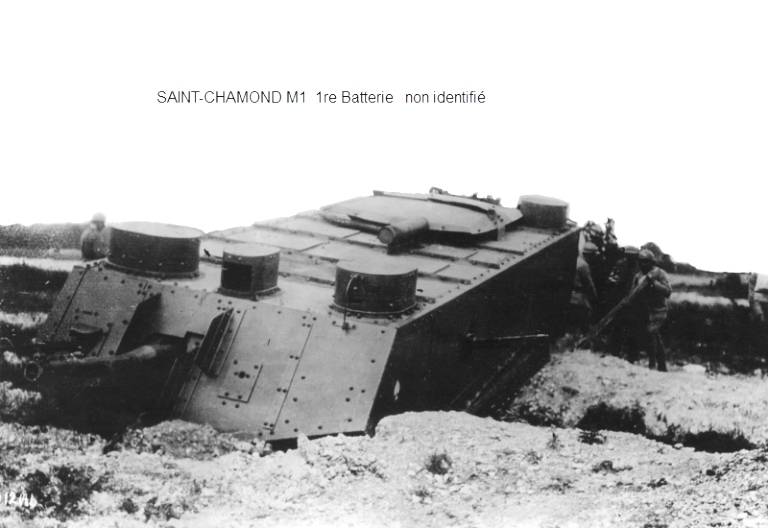
The second model (from 62 551 to 62 610) was protected by a sloping roof so that grenades thrown into the tank would roll off it. The first copies were delivered without viewing slots. The driver had only folding flaps that did not provide protection in the open position. These models did not enter service until a protective viewing slot was installed for the driver.
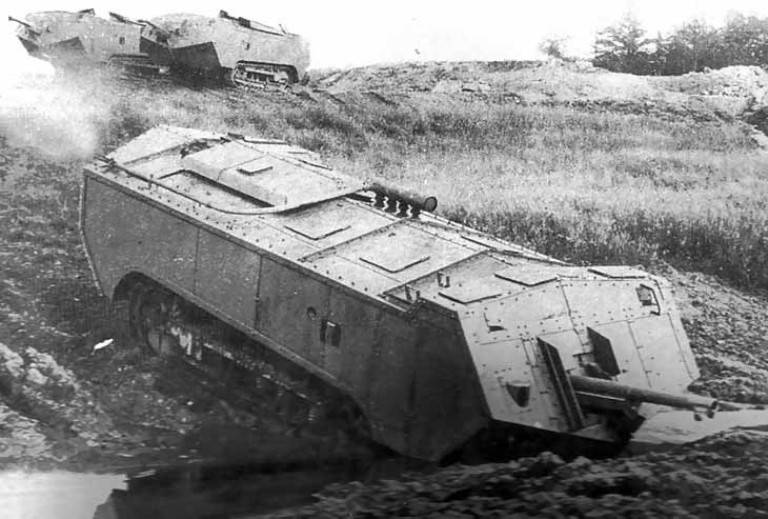
The third model (from 62 611 to 62 800) was armed with an improved 75 mm model 1897 gun. From # 62 669 the main side armor was reinforced with additional armor plates.


Like the Schneider, the Saint-Chamond would suffer frequent breakdowns and maintenance difficulties throughout its career, exacerbated by a chronic lack of spare parts.
Part of the tanks were converted into tanks without weapons (at the rate of 2 units per combat unit). This lighter variant offered better off-road performance.

These were the first prototypes and serial tanks of the French army, which took part in the battles of the First World War.
Information